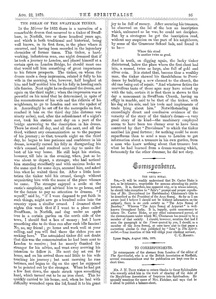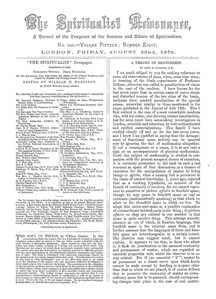
< The Dream of the Swaffham Tinker (continued from page 8-340) >
joy to be full of money. After securing his treasure, he observed on the lid of the box an inscription which, unlearned as he was, he could not decipher. But by a stratagem he got the inscription read, without any suspicion on the part of his neighbours, by some of the Grammar School lads, and found it to be—
Where this stood |
And in truth, on digging again, the lucky tinker disinterred, below the place where the first chest had lain, a second, twice as large, also full of gold and silver coin. It is stated that, become thus a wealthy man, the tinker showed his thankfulness to Providence by building a new chancel to the church, the old one being out of repair. “And whatever fiction the marvellous taste of those ages may have mixed, up with the tale, certain it is that there is shown to this day a monument in Swaffham Church, having an effigy in marble, said to be that of the tinker, with his dog at his side, and his tools and implements of trade lying about him.” Notwithstanding this exceedingly direct and conclusive evidence of the veracity of the story of the tinker’s dream—a very good story of its kind—the machinery employed seems to have been too clumsy ever to have been contrived by that “Providence” to which the tinker ascribed his good fortune; for nothing could be more superfluous than to send a man to London to get information about a treasure in his own garden, from a man who knew nothing about that treasure but what lie had learned from a dream-warning which, fortunately for the other dreamer, he did not obey.
The Aria Samaj
Sir,—It will be readily understood that Dr. Carter Blake is not, as he intimates, responsible for persons attending his public lectures. It is, therefore, less apparent why, or in whose interest, he should take exception to “Zeta’s” prompt and proper repudiation of Mr. Hurrychund (or Harichandra) Chintamon’s title to be described as the President of the Arya Somaj. So far as I am aware (and I believe I should not be without information on the subject), there is Ho such society as “The Arya Somaj of Bombay.” Whereas “The Arya Somaj of Aryavart” is well-known throughout India. It is, happily, quite unnecessary to inform Dr. Carter Blake, or any other unconcerned person, of the circumstances Under which Mr. Chintamon has ceased to be a member of that society. I should, however, mention that had I seen the paragraph in the Times quoted by you, I should, as a member of the Arya Somaj, at once have sent to that paper a correction similar to that published by “Zeta” in The Spiritualist—Your insertion of this will oblige your obedient servant,
Lyme Regis, August 16th, 1879.
A Theory of Mediumship
I am much obliged to you for making reference to some old observations of mine, nil on, some time since, in treating of the Slade experiments of Professor Zollner, attention was called to peculiarities of vision in the case of the medium. I have known for the last seven years that in certain cases of nerve strain and disturbed tension of the two sides of the brain, mediums show marked peculiarities of the special senses, somewhat similar to those mentioned in the paper published in the Lancet of July 12th. This I first noticed in the case of a most remarkable medium who, with her sister, also showing related peculiarities, has for some years been astonishing investigators in London, scientific and otherwise, by well-authenticated and verified materialisations. This family I have studied closely off and on for the last seven years, and I know I am justified in saying that the derangement of functional sense activity can be ignored only by ignoring the fact of mediumship altogether. If not a consequence or a cause, it is at any rate a sign or an accompaniment of physical mediumship. Until the subject of mediumship is studied in connection with the present accepted theory of sensation, it is certainly premature to fall back on such a last resource as space of four dimensions as a theatre of operation for the manipulation of matter by living beings or spirits, when a missing link is perceived in the chain of natural knowledge. I, years ago, rejected that as a working hypothesis, on account of the breach of continuity it involves, for we cannot represent to ourselves or picture affairs in fourfold space, though we may grant to fourfold space as real an existence (mathematically speaking) as that which we allow to the threefold space in which we live. To adopt this extra-unit space as a possible explanation of extraordinary isolated parts is one thing; to picture affairs as they are related to one another in that space is quite another thing. This attempt secretly assumes an eye of which, in Kantian language, that fourfold space is the external sense form, and it further assumes that the languages of three and fourfold space are interchangeable to a certain extent. The doctrine may suggest much, but it cannot explain. It appears to me that, to those who adopt it, it finds its justification in the assumed continuity and permanence of matter, which are regarded as essential properties with which the observer is in no way related. For if (an essential “if”) matter be as permanent as a closed curve upon which knots cannot be made except by bending in a space other than that in which we are placed, it of course follows that to preserve the continuity of matter an extraordinary space has to be assumed, should corresponding changes take place in the case of real matter. <... continues on page 8-343 >
Editor's notes
Sources
-
London Spiritualist, No. 365, August 22, 1879, p. 95
-
London Spiritualist, No. 365, August 22, 1879, pp. 86-8


